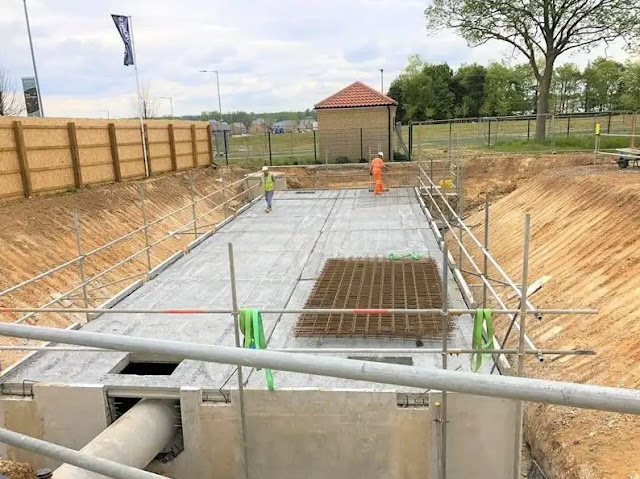Best Stormwater Management Technique for Urban Areas
Rapid urbanization has put immense pressure on the natural stormwater drainage system. As a result, flood and non-point source pollution is a commonplace. To prevent these issues, every homeowner in the UK has the obligation to maintain stormwater neutrality. For residential developments, to control the peak flow of stormwater that is discharged from a site, it is best to use a stormwater attenuation tank along with a flow-control device.
A stormwater attenuation plant can be installed underground, even under driveways and garage. The underground tank can effectively detain the entire rainwater falling on the roof and impervious surfaces, such as driveways, window ceilings, and lawn. Once water is stored in this tank, it can be released to the nearby stormwater drainage network at a controlled rate. The stormwater attenuation system helps in controlling the peak, volume, and flow of stormwater.
While stormwater attenuation system is effective in mitigating flood, you can also implement some green infrastructure practices. In this write-up, we have mentioned a few of them.
1) Green roofs- In this technique, small plants are grown above the roof. This vegetative layer absorbs most of the rainwater and slows down the flow of stormwater. As both soil and green plants are excellent water filters, this technique also helps in improving the quality of stormwater being absorbed by the stormwater attenuation tanks.
2) Porous pavements- Pervious pavements allow the majority of stormwater to be stored and infiltrated into the soil. Apart from preventing flood, this technique also induces water table recharging.
3) Bioretention systems- This system comprises a soil bed with non-invasive vegetation. The stormwater entering the bioretention system is filtered before being conveyed downstream by an underdrain system.
Conclusion- Installing a stormwater attenuation plant is the best way to achieve stormwater neutrality. Apart from that, each homeowner should implement green infrastructure practices, such as green roofs, porous pavements, and bioretenion plants.
A stormwater attenuation plant can be installed underground, even under driveways and garage. The underground tank can effectively detain the entire rainwater falling on the roof and impervious surfaces, such as driveways, window ceilings, and lawn. Once water is stored in this tank, it can be released to the nearby stormwater drainage network at a controlled rate. The stormwater attenuation system helps in controlling the peak, volume, and flow of stormwater.
While stormwater attenuation system is effective in mitigating flood, you can also implement some green infrastructure practices. In this write-up, we have mentioned a few of them.
1) Green roofs- In this technique, small plants are grown above the roof. This vegetative layer absorbs most of the rainwater and slows down the flow of stormwater. As both soil and green plants are excellent water filters, this technique also helps in improving the quality of stormwater being absorbed by the stormwater attenuation tanks.
2) Porous pavements- Pervious pavements allow the majority of stormwater to be stored and infiltrated into the soil. Apart from preventing flood, this technique also induces water table recharging.
3) Bioretention systems- This system comprises a soil bed with non-invasive vegetation. The stormwater entering the bioretention system is filtered before being conveyed downstream by an underdrain system.
Conclusion- Installing a stormwater attenuation plant is the best way to achieve stormwater neutrality. Apart from that, each homeowner should implement green infrastructure practices, such as green roofs, porous pavements, and bioretenion plants.



Comments
Post a Comment